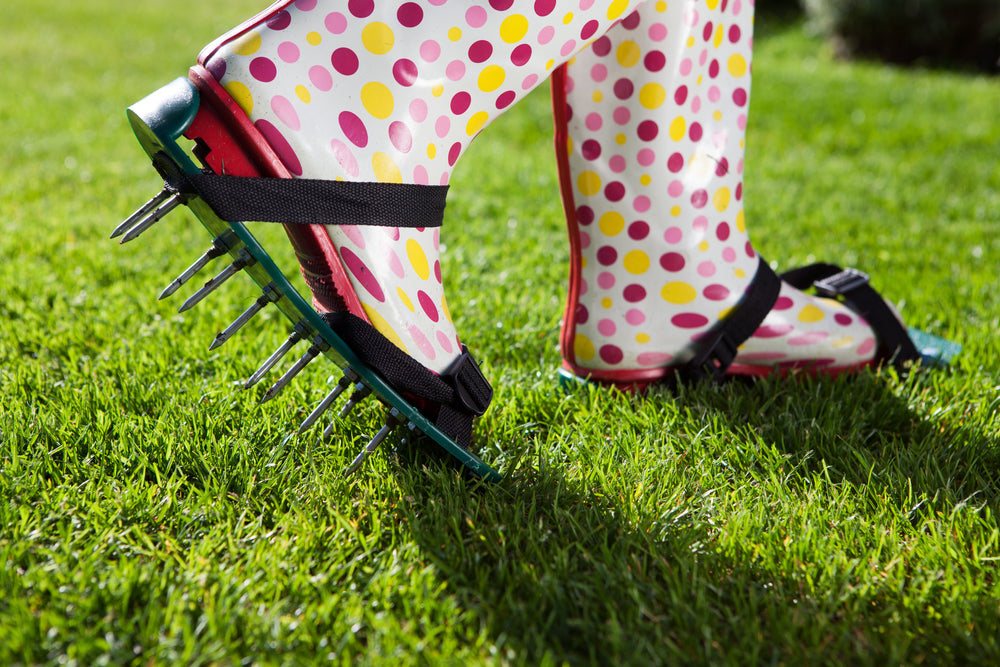Technology in the garden - lawn aerators

If your lawn has seen a lot of activity over the summer months, it may have become compacted and need aerating. This involves making holes in it to allow oxygen and water to get to the soil and roots of the grass. Autumn is a good time to aerate the lawn when the soil is still warm so that roots can recover in time for winter.
Manual aerators are accessible tools for this. There are two different types. Generally, the most efficient, especially for clay soil, is the hollow-tine aerator, which lifts out plugs of soil, letting in more oxygen to the roots. They tend to have a long handle and several tines coming off a base that you stamp on to create a network of holes at regular intervals. The tines expel the soil when the next hole is made and the plugs can be left to decompose or raked up. It’s worth looking out for good quality tools made of stainless steel, wooden handles with a soft comfortable grip and strong tines that will cope with compacted turf. It takes a bit of effort but is excellent for the soil condition.
The other option is a spike (or solid tine) aerator that works by pushing spikes into the lawn at around 30cm intervals. They are more effective in sandier soils. You could use a fork, or an easier option is aerating spikes that you strap onto your feet and you simply walk around the garden with your weight doing the work. There are different models, so look out for ones that are adjustable and sturdy. Manual rolling drum are another option. Ideally you want a good number of metal spikes on the drum – 20 – 40 – of a good length of at least 6cm to penetrate the ground deeply.
It’s good practice to fill the aeration holes with top dressing of sand and fine loam after you’ve aerated, to improve the soil’s texture and drainage. It might look a little worse for wear at first but you’ll be rewarded with healthier, denser grass next spring!










